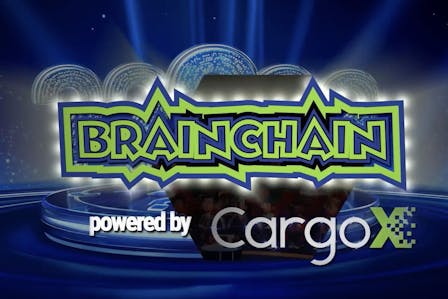ELECTRONIC BILL OF LADING SOFTWARE
Transform the way you handle bills of lading with CargoX electronic bill of lading software that allows seamless creation, transfer, processing, and management of digital bills of lading. Choose to send them as convenient PDFs or structured electronic data. Integrate into your ERP system through the API interface.
All bills of lading will be electronic by 2030
Save time and money right away
Drastically reduce risk of loss, misdelivery, or damage to the document
Comparison: paper BL vs electronic BL
| Traditional paper BL | Electronic BL | |
|---|---|---|
| Change of ownership | by sending original BL | Instant transfer |
| Time in transit | 5-10 days | Instant |
| Can be stolen | Yes | No |
| Can be lost | Yes | No |
| Archiving | Expensive paper storage / office space | Included in service (digital storage) |
| Cargo information & automation (location, temperature, etc.) | No | Yes |
Avoid the disadvantages of paper BLs
Traditional paper bills of lading often face delays due to physical transportation, processing time, and potential errors in handling.
Amending a bill of lading after the document has been signed and sent or unauthorized entries.
This lack of security increases the risk of financial loss and legal complications for all parties involved.
These costs stem from handling and physical delivery, as well as the time and labor required to process and verify documents.
Join more than 150,000 companies
Use the powerful search and managed team collaboration features, and boost your efficiency with advanced workflows. We are constantly adding new types and standards as they emerge!
Here is something you may want to know: Under the eUCP rules, which aim for a faster and more secure trade financing, electronic bills of lading are incorporated into the documentary payment process and the electronic presentation of documents.
The fastest growing eBL ecosystem
The CargoX Platform is the fastest-growing eBL ecosystem in the world of shipping. Thousands of companies are already using it daily to transfer their most important electronic trade documents. Seize the moment and embrace the platform to elevate your business to new heights.
Clear advantage in the market
-
We support ALL TYPES of BL
-
10M+ of shipping blockchain documents transferred
-
150k+ companies registered & validated on platform
-
185k+ users registered on platform
-
IGP&I approved
-
Authorised by governmental agencies as the blockchain document transfer gateway
It is legal to use it everywhere
In accordance with the parties' freedom of contract, all parties to a freight transaction may agree to accept the electronic bill of lading as a valid document, with all the practical benefits and legal consequences that this entails. Even if the laws in the countries do not yet specifically establish electronic BL as a document.
Until countries enact laws regulating electronic trade documents, the parties to the contract of carriage may determine the use and validity of digital bills of lading through sets of rules or general terms and conditions within the framework of freedom of contract.
Use the power of blockchain
A blockchain bill of lading, developed and exchanged via the CargoX Platform, offers an enhanced electronic bill of lading format that boasts superior reliability, security, and confidentiality, all while being incredibly user-friendly.
Utilizing neutral, public blockchain technology, we create an unchangeable record of transfers with an audit trail. This blockchain implementation guarantees absolute transparency in business transactions through irreversible timestamps on document transfers. Additionally, the confidentiality between business partners remains intact, ensuring that no external party can access the document content or transfer detail.
Major benefits of using electronic bill of lading software
Electronic BLs can be processed contactlessly and remotely in distributed teams. In addition, on the CargoX Platform, the validation and sealing of documents and transfers is reliably guaranteed by the global, neutral blockchain with cryptographic properties.
Document possession & control transfer
Rapid transfer around the globe prevents damage and demurrage costs
Radically lower costs of sending, processing, and archiving
Cannot be lost, stolen, or tampered with
Higher level of security through immutable transfer records
Rapid auditing of document transfer events
Validation of the owner prevents misdeliveries
DCSA, FIT Alliance, and McKinsey confirm global adoption path
Switching to electronic bills of lading software is the easiest decision to make! The savings and benefits of using digital bills of lading can be astounding, as demonstrated by the Mckinsey report and DCSA announcement. According to the survey report by the FIT Alliance, some companies are already breaking away from the pack and are embracing digitalization.
- 28% of respondents already use eBL in conjunction with paper
- 5% have switched completely to eBL
- 58% of those using only paper BLs plan to use eBLs
- 22% say they will use eBL within the next 6-24 months
All major BL types supported
CargoX offers the issuing, transmission and processing of all types of bills of lading:
- Carrier/Master BL
- SeaWay Bill
- House BL
- FIATA eFBL
- BIMCO eBL
- All modalities are supported - container, dry bulk, liquid bulk
- Negotiable and non-negotiable BL supported
FIATA eBL
Members of the International Federation of Freight Forwarders Associations (FIATA) can register on the CargoX Platform to issue and transfer FIATA eFBLs.
The eFBLs can be transferred through the CargoX Platform, or sent independently (the choice is yours).
Register to create and transfer FIATA FBLs on the CargoX Platform in just a few easy steps:
BIMCO eBL
CargoX will support standardised electronic bills of lading from the Baltic and Maritime Council (BIMCO), which can be transmitted via the CargoX Platform as soon as the standard becomes publicly available.
BIMCO has partnered with the International Chamber of Commerce (ICC) and other industry stakeholders to develop an international standard for electronic bills of lading (eBL) for dry and liquid bulk cargoes.
BIMCO is widely known to regulators, banks and insurers for its standardised paper bills of lading such as CONGENBILL and CONLINEBILL.
CargoX is involved in standardisation and interoperability development
CargoX is involved in the many ongoing activities to define standards and frameworks for the global shipping industry and facilitate frictionless global trade. We participated in the DCSA eBL platform interoperability testing, as well as the FIATA eFBL transfer testing.
We contribute to the efforts of UNCITRAL, FIT Alliance, DCSA, ICC, FIATA, BIMCO, ITFA, G7, UN/CEFACT.
The evolution in global trade regulation
Subscribe to the CargoX Newsletter
Receive all the important information about eBLs and news about CargoX in our occasional newsletter.
Your personal data will be processed by CARGOX d.o.o., Ameriška ulica 2, 1000 Ljubljana, EU, based on legitimate interest (communication with customers and the public – Article 6(1)f of the GDPR) for the purpose of responding to your question or inquiry. We will retain your personal data until the end of our communication (in the case of an inquiry, until the expiration of the offer's validity), after which it will be deleted. If you have consented (Article 6(1)a of the GDPR), we will also process your personal data for the purpose of direct marketing. You can unsubscribe from this at any time by clicking on the link in the received message. More information can be found in our Privacy Policy.


